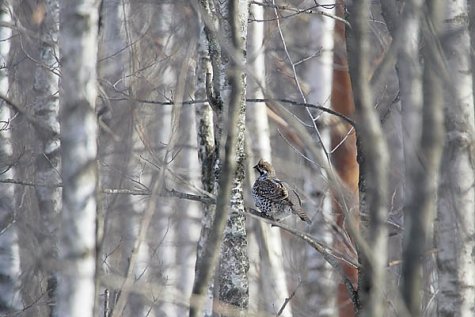VIDEO: Hazel grouse in focus
Video Ahto Täpsi
Photo Arne Ader
Translation Liis
Hazel grouse Laanepüü Tetrastes bonasia
On the throat of the male we notice a large black spot framed in white. We see a narrow bright red eyebrow streak and a neck crest. Both in the video and in Arne’s photo we see a male.
The plumage at the throat of the female is whitish and the crest at the nape only barely visible. The whole plumage is a little paler compared to the male. The eye colour of both is reddish-brown, the little beak black. After the moulting in autumn the juveniles now look like the adults.
The pairs that formed during the display in September-October may sometimes stay together for the whole winter.
The grey back plumage of the hazel grouse is patterned with darker brown and grey speckles. The underbody is white with blackish-chestnut brown patches. Wings and sides have rusty brown patches, at the tip of the tail black cross-bands. The feet of hazel grouse are brownish-grey, toes are covered by fringes in winter – more comfortable in searching for food or clinging on to icy branches.
It is a Galliformes order bird, with a small head and sturdy body. The males and females are about the same size, weight about three or four hundred grams or a little more. Body length less than forty centimetres, wing span in flight about half a metre. In flight a whirring of wings peculiar to hazel grouse is heard. All the wild hen species in our forests rise into flight noisily – a mystery how only pigeon-sized birds manage to produce such noise (who has heard it will understand).
A native species – in the Estonian mainland hazel grouse remain all the year close to the nest sites; mixed spruce forests with dense undergrowth are preferred. Winter food consists of alder buds and catkins, if there are birches, aspens, hazels in the neighbourhood, then their catkins and shoots too. In winter we can meet hazel grouse in alder and birch mixed forests.
The winter number is estimated at fifty to a hundred thousand; the ground nesting hazel grouse have become significantly fewer in Estonia.
Hazel grouse









